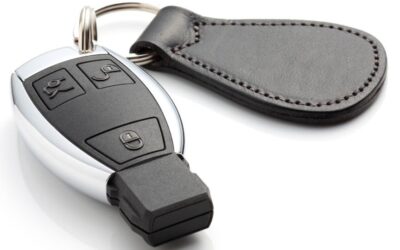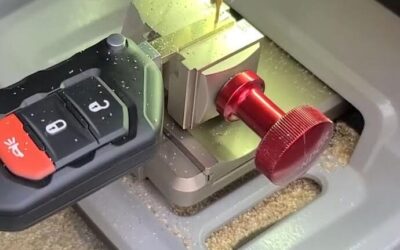Updated 2025 Guide to Car Key Types and Features
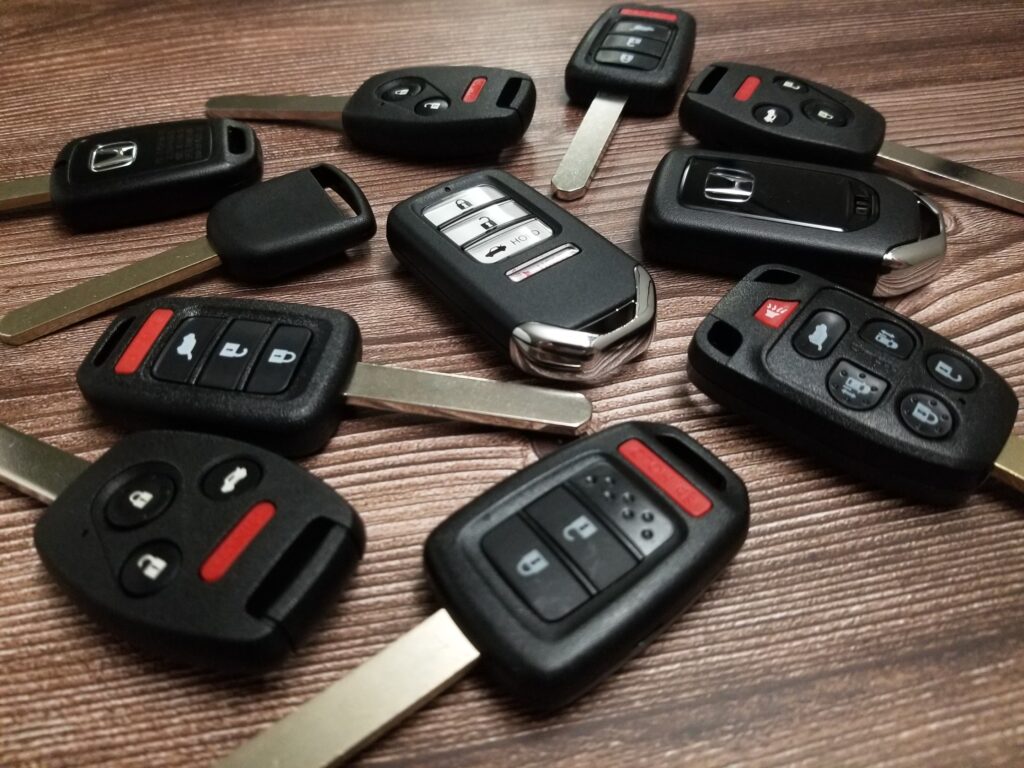
Have you ever wondered why some car keys are so simple and others are more sophisticated?
In today’s world, where technology advances by leaps and bounds, even car keys have evolved to offer greater security, convenience, and in some cases, even smart functions. But with so much variety, do you know what type of key your car has? And which is the safest to protect your vehicle in a city like Miami?
At Pro Key Solutions, as experts in automotive locksmithing in Kendall and the Miami area, we’ve seen it all: from mechanical keys that break from use to remote controls that fail due to Florida’s characteristic humidity. That’s why we’ve created this guide where we explain the types of car keys that exist on the market today, their features, advantages, disadvantages, common problems, and recommendations, especially relevant to the Miami area:
- Mechanical Key (without electronic components).
- Transponder Key (anti-theft chip).
- Remote Control Key (independent remote control).
- Remote Head Key (remote control integrated into the head).
- Fobik Key (port ignition).
- Smart Key (push-button ignition).
If you’ve ever had to spend hundreds of dollars reprogramming a lost key or been locked out of your car in the Florida sun, this article is for you. Read on and become an expert in automotive keys… or if you prefer, contact us and we’ll answer any questions you have!
1. Mechanical key
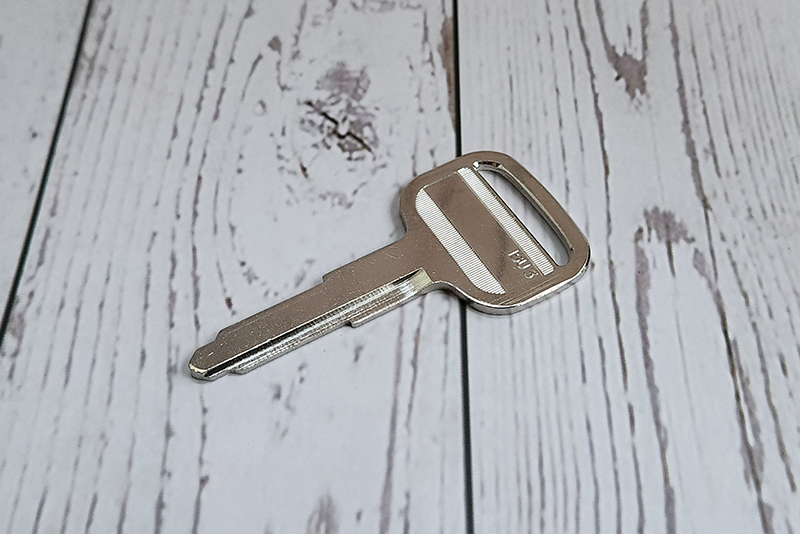
Description: The traditional mechanical key is the oldest and simplest system on the market. Made entirely of metal, it contains no electronic components and works by the simple principle of physical coupling between its teeth and the vehicle’s lock. Its robust design makes it resistant to water and impacts, but its security is limited as it can be easily duplicated in some cases. Although some economical models still use it, its lack of anti-theft technology and the tendency to wear out over time have made it an increasingly less common option in modern cars. These keys can frequently have problems with wear and jamming in the locks, unlike other more advanced systems.
Advantages:
- Resistant: Resists water and impacts.
- Economical: Simple and economical duplication. Except for high security keys.
Disadvantages:
- Low security: Easy to copy with a basic duplicate in some cases.
- No additional functions: No remote control.
Common Problems:
- Wear over time, can damage the lock or break.
- Jamming in locks due to lack of maintenance.
Examples of cars that use it:
- Classic cars and some current economy models.
- Modern cars, as an emergency key.
2. Transponder Key (Anti-Theft Chip)
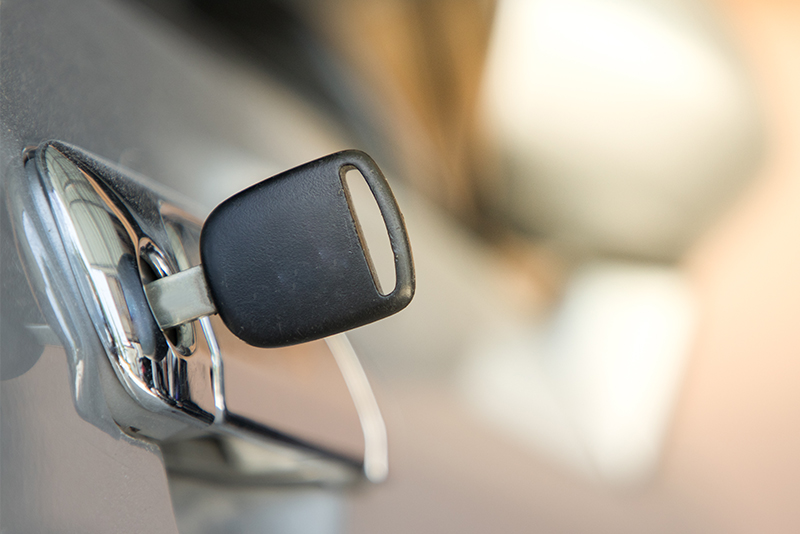
Description: The transponder key (or chip key) represents a significant leap in automotive security. This system incorporates a small electronic chip embedded in the plastic head that communicates with the vehicle’s anti-theft system via a coded signal. Unlike traditional keys, even if someone physically copies the shape of the key, the engine will not start without chip authentication. Its robust design without moving parts makes it more resistant than keys with buttons, but when it fails, it requires professional reprogramming. Very popular in vehicles manufactured between 1995 and 2010, this system offers an ideal balance between security and practicality, although in Miami the most common problems include loss of synchronization due to electromagnetic interference or damage to the chip due to prolonged exposure to extreme heat. A key detail is that these keys do not require a battery, as they are inductively powered when inserted into the ignition switch.
Advantages:
- High security: Difficult to clone without specialized equipment.
- Durable: Does not depend on batteries.
Disadvantages:
- Expensive reprogramming: requires a specialist.
- No remote control: only works to start the car.
Common Problems:
- Car does not recognize the chip (requires reprogramming).
- Split or damaged head (needs professional replacement).
Examples of cars that use it:
- Ford F-150 (2000-2019).
- Toyota (1998-2019).
3. Remote Control Key
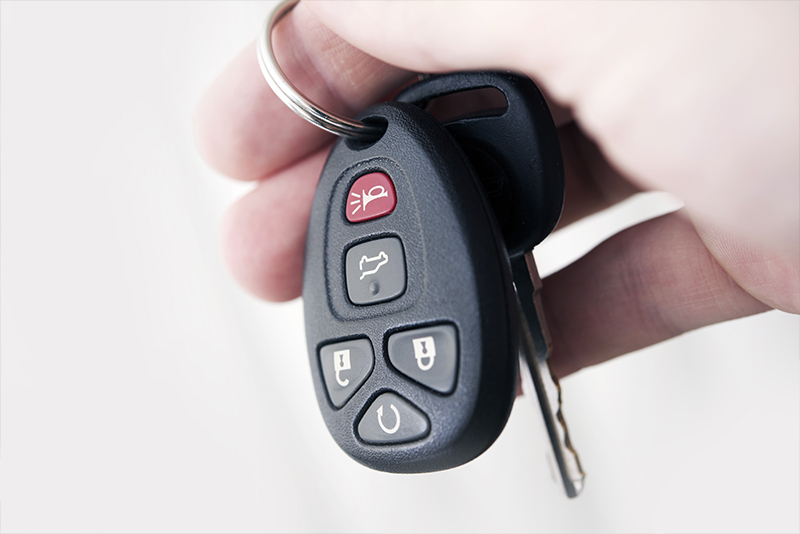
Description: The remote control key (or independent remote control) offers maximum practicality for access without direct contact with the vehicle. This system consists of two separate components: a traditional mechanical or chip key and a remote control with buttons that allows you to lock/unlock doors, activate the alarm, open the trunk remotely, and even start the car (generally with a range of 5 to 20 meters). Its main advantage is the convenience of being able to unlock or prepare the vehicle before entering, especially useful in extreme climates like Miami’s. However, its bifurcated design makes it bulkier than other integrated systems, and constant exposure to elements such as sun, humidity, and salt spray can prematurely deteriorate the buttons or affect the radio frequency signal. Very common in vehicles from the 2000s to 2015, this system represents an intermediate solution between basic technology and advanced keyless systems, although its double component increases the probabilities of loss or damage to any of its parts. When it fails, it generally requires complete replacement of the control, since its sealed circuits make economic repairs difficult.
Advantages:
- Convenience: allows access to the vehicle without having to insert the key.
- Protection: extends the service life of the door locks.
Disadvantages:
- Requires batteries: needing replacement.
- Vulnerable to interference.
Common Problems:
- Damage from moisture or extreme heat.
Examples of cars that use it:
- Nissan Frontier (2002-2010).
- Kia Rio (2006-2011).
4. Remote Head Key
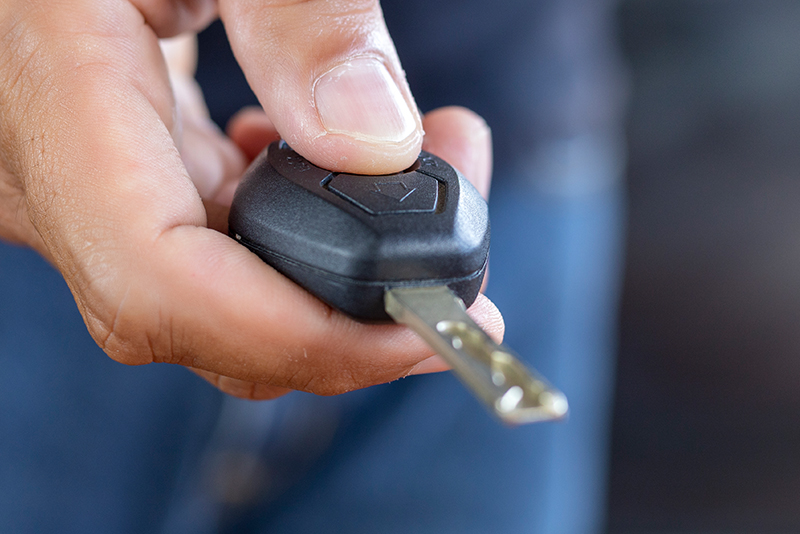
Description: The remote head key combines the best of both worlds: mechanical reliability and electronic convenience. This type of key integrates a remote control with buttons in its plastic head to lock/unlock doors, while maintaining a traditional metal blade to insert into the lock. More secure than a purely mechanical key but less expensive than advanced systems, it offers basic remote control functions without sacrificing simplicity. However, in Miami’s humid climate, its electronic components can be affected by moisture, causing button failures or corrosion in internal contacts. Popular in mid-range cars produced between 2005 and 2015, this key represents an intermediate point in the evolution of vehicle access systems, balancing price, functionality, and basic security.
Advantages:
- More secure than a mechanical key (has anti-theft system).
- Convenience: You don’t need a separate remote control.
- Replaceable battery: Easy to maintain.
Disadvantages:
- Moisture failures: buttons may stop working in humid climates (such as Miami).
- Higher duplicate cost.
Frequent Problems:
- Unresponsive buttons (due to dead battery or liquid damage).
- Breakage (separation of the metal blade and the plastic head).
Car Examples:
- Toyota Corolla (2008-2019).
- Honda Accord (2003-2020)
5. Key Fobik

Description: The Fobik key represents the evolution towards a more compact and functional design. Unlike previous systems, this key completely eliminates the traditional metal blade, presenting a small and ergonomic format that is inserted directly into a specific port of the vehicle to activate the ignition. Its main advantage lies in its integrated proximity system, which allows the car to automatically recognize the key when the driver approaches. However, its sophisticated electronics make it particularly vulnerable in Miami’s climate: humidity can damage its internal circuits and extreme heat affects its battery life. Common in mid-high-end vehicles manufactured after 2008, the Fobik key offers a balance between elegance and technology, although its repair or replacement involves significantly higher costs than traditional systems, especially when full reprogramming with the vehicle’s anti-theft module is required.
Advantages:
- Ergonomic and practical.
- Greater security than traditional keys.
Disadvantages:
- Higher replacement cost.
- Requires battery.
Frequent Problems:
- Failure to communicate with the car.
- Damage from drops or water.
Example Cars:
- Dodge Ram (2008-2020).
- Jeep Grand Cherokee (2008-2013).
6. Smart Key (Keyless Entry and Push-to-Start)
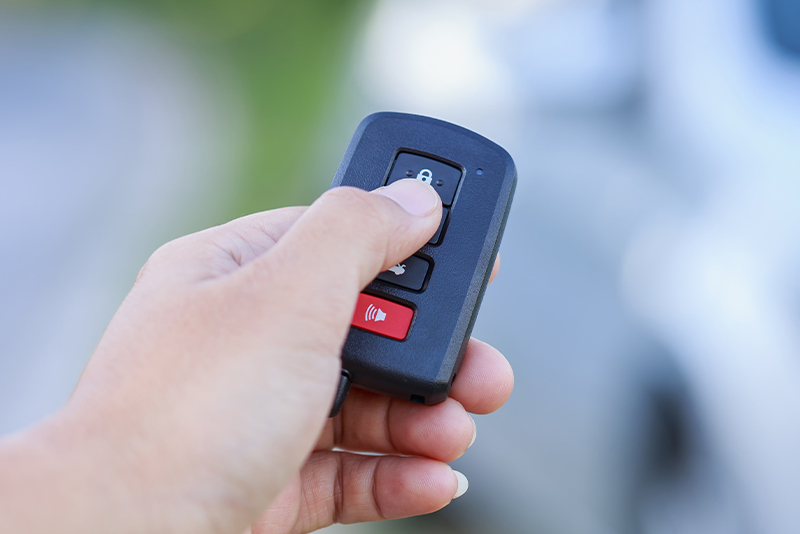
Description: The smart key (Keyless Entry & Push-to-Start) represents the pinnacle of current automotive technology, completely eliminating the need for physical manipulation. This sophisticated system allows you to open doors by simply approaching the vehicle (thanks to proximity sensors) and start the engine by pressing a button, keeping the key always in your pocket. Its advanced encryption and bidirectional authentication system offers maximum security against theft, although in Miami it is recommended to use protective covers to avoid “relay attacks” (signal amplification hacking technique). Popular in premium vehicles and recent models (2015 onwards), these keys frequently include additional functions such as remote start from a smartphone, geolocation, and customization of driving preferences. However, their technological complexity makes them vulnerable to failures due to electromagnetic interference in congested urban areas, and their replacement always requires professional programming with specialized equipment. Miami’s extreme climate particularly affects their battery, whose useful life is significantly reduced by constant high temperatures.
Advantages:
- Maximum comfort.
- Advanced technology (some include cell phone startup).
Disadvantages:
- High replacement cost.
- Vulnerable to hacks (relay attack).
Common Problems:
- Dead battery (car does not detect the key).
- Electronic interference.
Car Examples:
- Ford F150 (2015-2025).
- Chevrolet Equinox (2018-2025)
Recommendations
Each type of key has its pros and cons. If you live in Miami, where weather and risk of theft are important factors, we recommend:
- Protection against humidity: Use protective covers for electronic keys.
- Theft prevention: Consider additional anti-theft devices and protective covers against “relay attacks” for smart keys.
- Regular maintenance: Check and replace electronic key batteries periodically.
- Security duplicates: Get duplicates of your keys. Avoid inconveniences and save on total replacements.
- Trusted professionals: In case of loss or problems, go to certified automotive locksmiths.
I hope this guide is very useful to you.
Do you need duplicates, reprogramming, or key replacements in Kendall and Miami? At Pro Key Solutions we help you with fast and professional service! Contact us today!



